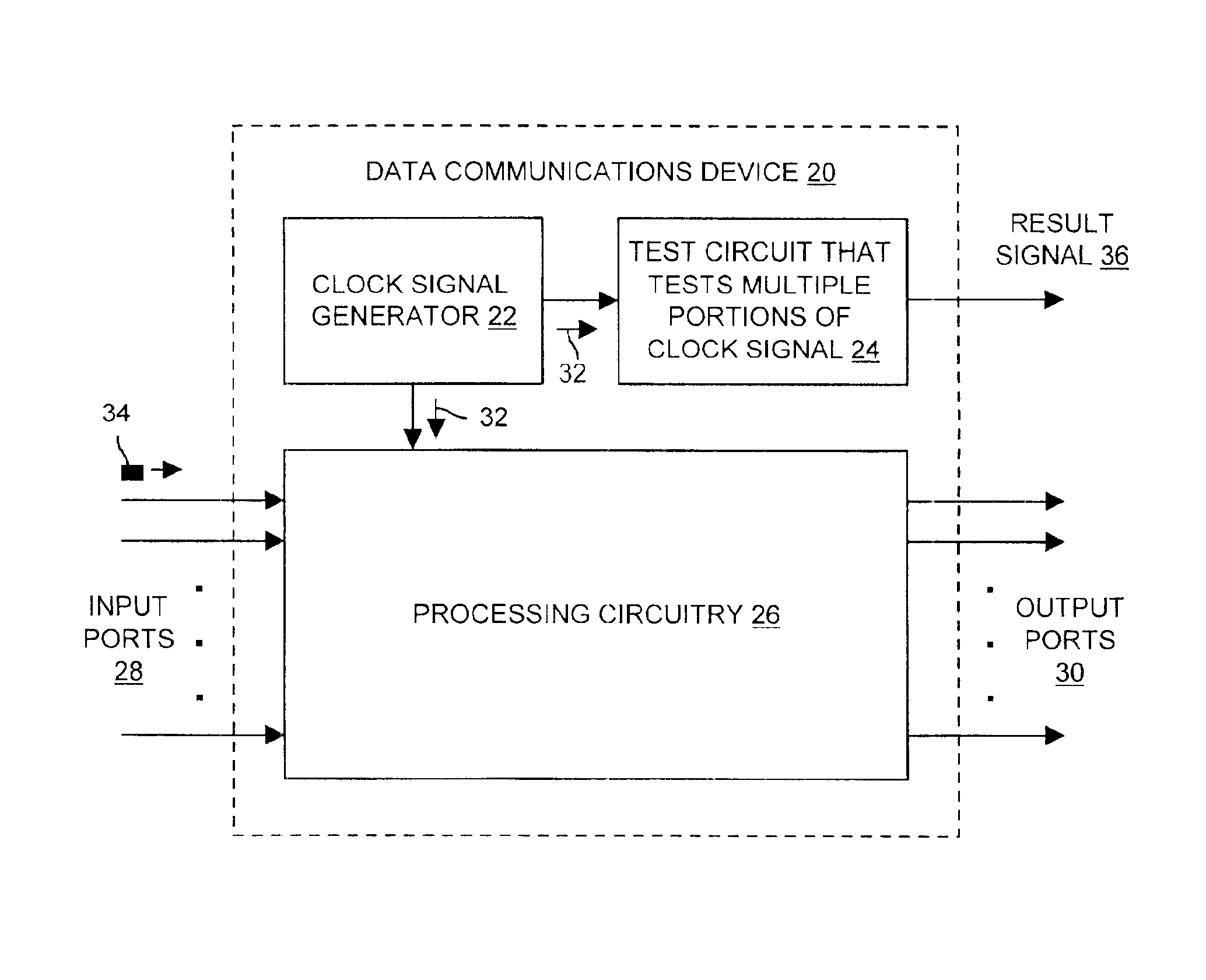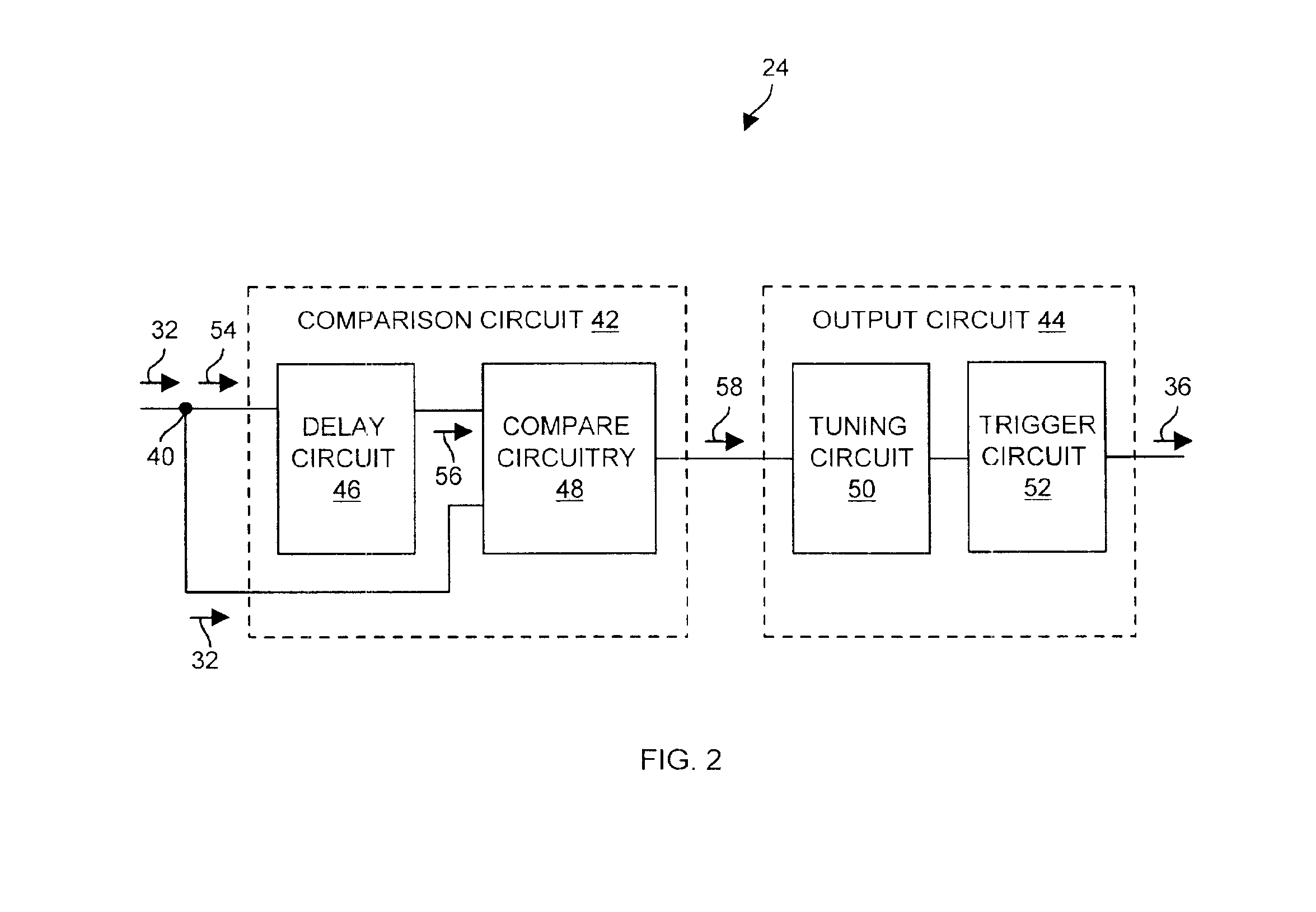Methods and apparatus for testing a clock signal
a clock signal and clock signal technology, applied in the direction of testing circuits, instruments, pulse characteristics measurements, etc., can solve the problems of inability to accurately detect the presence of such anomalies, the existence of clock signals that are irregular, and the computer system is prone to malfunction and/or useless, etc., to achieve various levels of accuracy and build the operating margin
- Summary
- Abstract
- Description
- Claims
- Application Information
AI Technical Summary
Benefits of technology
Problems solved by technology
Method used
Image
Examples
Embodiment Construction
The invention is directed to techniques for testing a clock signal by comparing different portions of that clock signal to each other. Such techniques enable the detection of clock signal irregularities such as a clock signal having missing pulses or having occasional delayed pulses. Accordingly, these techniques can be used to insure the quality of the clock.
FIG. 1 shows a data communications device 20 which is suitable for use by the invention. The data communications device 20 includes a clock signal generator 22, a test circuit 24, and processing circuitry 26. The data communications device 20 further includes a set of input ports 28, and a set of output ports 30.
During operation, the clock signal generator 22 generates a clock signal 32 (e.g., a 125 MHz square wave, a 25 MHz square wave, etc.) which is received by both the test circuit 24 and the processing circuitry 26. The processing circuitry 26 receives data elements of 34 (e.g., packets, cells, frames, etc.) through the se...
PUM
 Login to View More
Login to View More Abstract
Description
Claims
Application Information
 Login to View More
Login to View More - R&D
- Intellectual Property
- Life Sciences
- Materials
- Tech Scout
- Unparalleled Data Quality
- Higher Quality Content
- 60% Fewer Hallucinations
Browse by: Latest US Patents, China's latest patents, Technical Efficacy Thesaurus, Application Domain, Technology Topic, Popular Technical Reports.
© 2025 PatSnap. All rights reserved.Legal|Privacy policy|Modern Slavery Act Transparency Statement|Sitemap|About US| Contact US: help@patsnap.com



